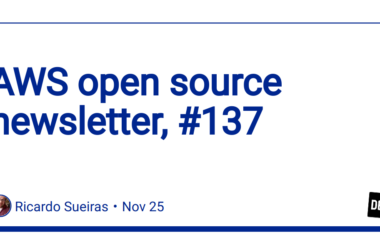Every Tuesday we round up the previous week’s top posts based on traffic, engagement, and a hint of editorial curation. The typical week starts on Monday and ends on Sunday, but don’t worry, we take into account posts that are published later in the week.
Is Lighthouse a misleading performance tool?
If you have tried to attain a top score in Lighthouse — it may have made you doubt yourself, the tool, or both! Is Lighthouse misleading, or is it a misunderstanding? Find out more with @robole!

Is Lighthouse a misleading performance tool?
Rob OLeary ・ Jul 7
#performance
#testing
#productivity
Building a Real-Time Analytics Dashboard with Next.js, Tinybird, and Tremor: A Comprehensive Guide
In this post, we are going to explore how we can create a real-time analytics dashboard for page views with @mfts using Tinybird, Tremor.so, and Next.js!

Building a Real-Time Analytics Dashboard with Next.js, Tinybird, and Tremor: A Comprehensive Guide
Marc Seitz ・ Jul 6
#opensource
#analytics
#tutorial
Re-creating a Japanese Fireworks Catalog from 1883 in CSS
After seeing some beautiful old pages from a Japanese fireworks catalog from 1883, @madsstoumann got to work recreating them in CSS!

Re-creating a Japanese Fireworks Catalog from 1883 in CSS
Mads Stoumann ・ Jul 5
#codepen
#webdev
#showdev
Understanding JWTs: A Simple Guide for Beginners
In this post, @philip-ainberger explains JWTs. Short for JSON Web Tokens, they are a compact, URL-safe way of representing claims (information) to be transferred between two parties, the client and server. Read on to learn more about their structure, how they work, and why we use them!

Understanding JWTs: A Simple Guide for Beginners
Philip ・ Jul 5
#webdev
#beginners
#security
How I Got Hired Contributing to Open Source Projects
In the tech space, getting a job is not totally based on how good you are at the technical side of things, but rather your positioning. Learn more about how to get seen as a developer from @og_dev here!


How I Got Hired Contributing to open source projects
OGBONNA SUNDAY for OpenSauced ・ Jul 5
#webdev
#javascript
#career
How to Prevent Unnecessary React Component Re-Rendering
After reading this post from @femi_dev, you’ll better understand how to make React applications faster and more responsive using these handy React hooks.

How to Prevent Unnecessary React Component Re-Rendering
Femi Akinyemi ・ Jul 8
#javascript
#performance
#frontend
Let’s Learn Godot 4 by Making an RPG
@christinec_dev has been running an awesome series on DEV dedicated to teaching you how to build your own games using Godot! Check this post out for a sneak peek into what you’ll be working on as you follow along.

Let’s Learn Godot 4 by Making an RPG — Part 10: Animating AI Movement🤠
christine ・ Jun 21
#beginners
#tutorial
#programming
That’s it for our weekly Top 7 for this Tuesday! Keep an eye on dev.to this week for daily content and discussions…and be sure to keep an eye on this series in the future. You might just be in it!





![understanding-the-stages-of-your-sales-funnel-[infographic]](https://prodsens.live/wp-content/uploads/2023/07/12880-understanding-the-stages-of-your-sales-funnel-infographic-110x110.png)


